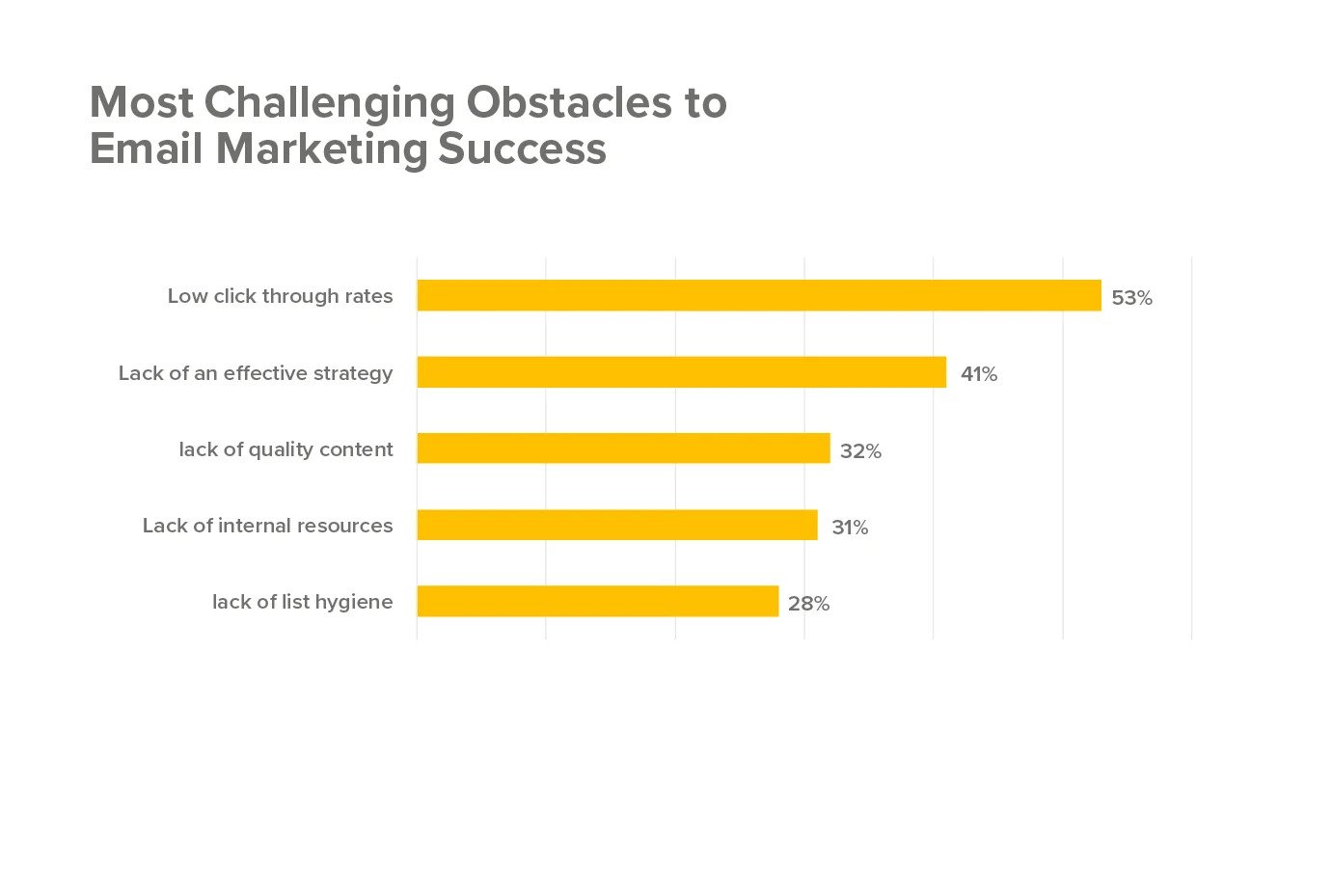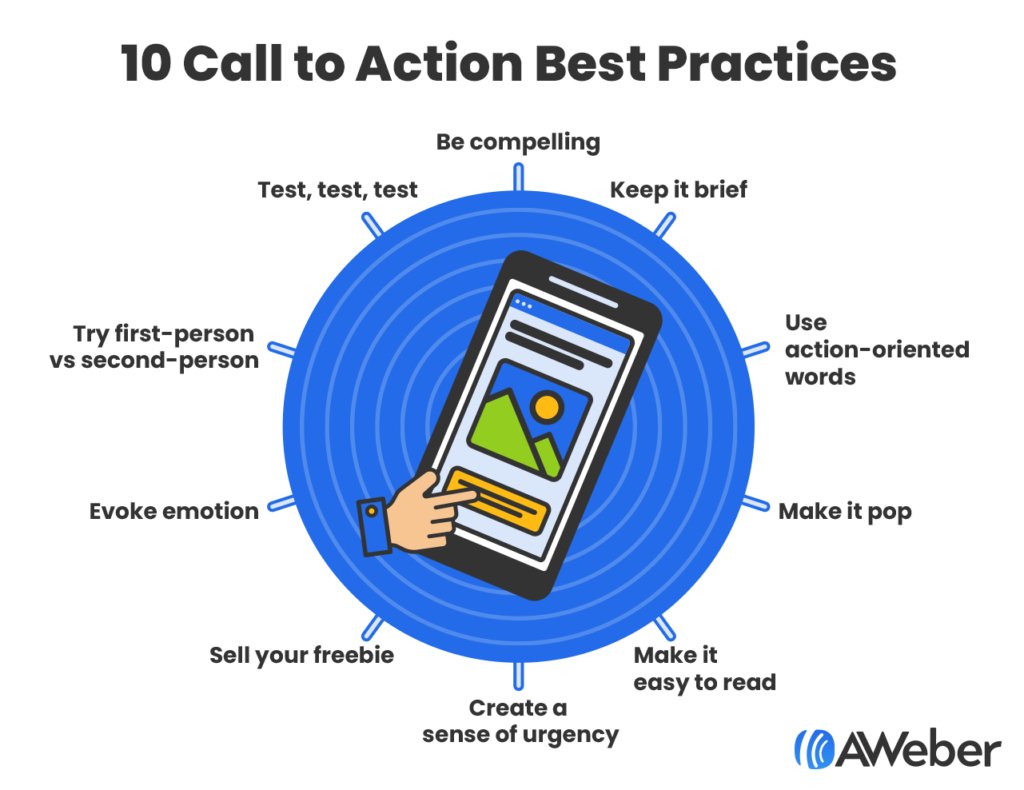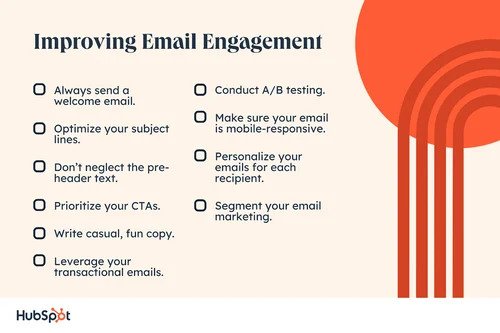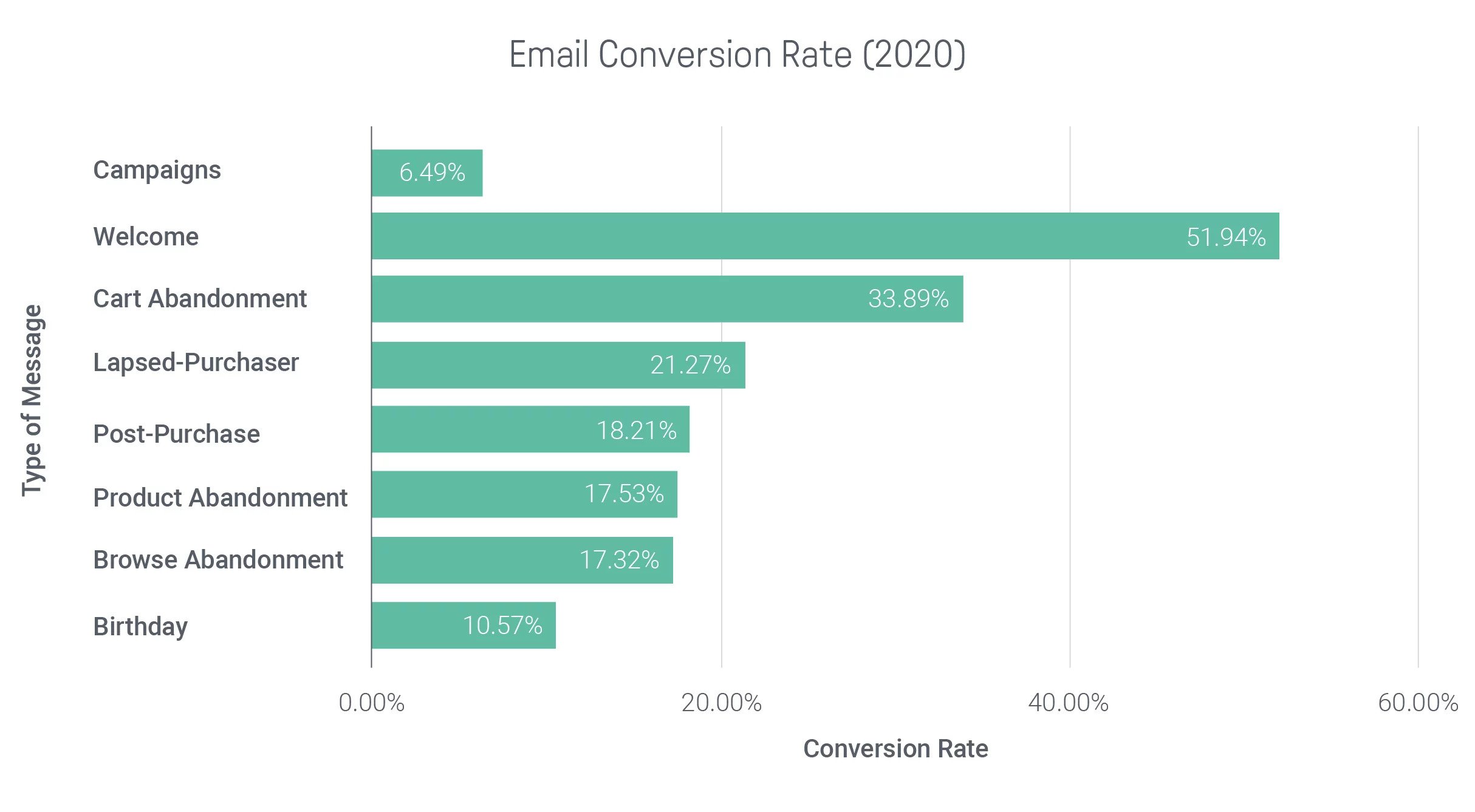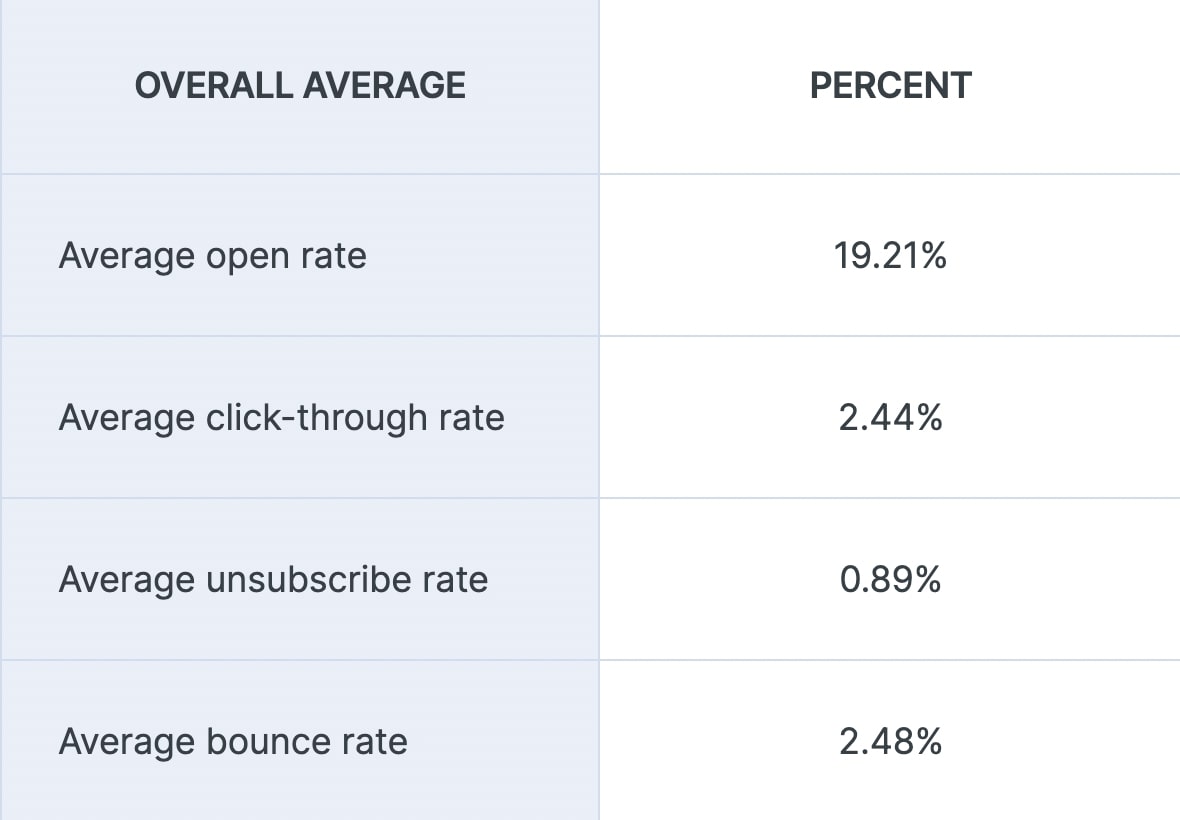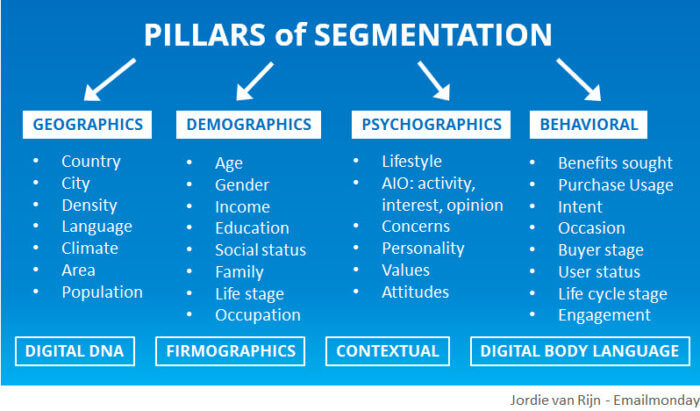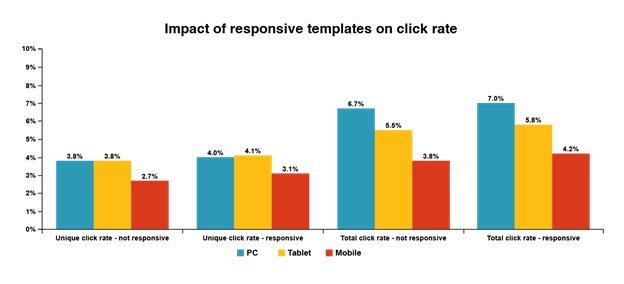What is Email Click Through Rate + How To Up CTR
What's CTR, how do you calculate it, and what's the difference between CTR and click rate? Get all of your answers in this email click through rate guide.
Updated November 6, 2024

Congrats! You've just sent your first (or 100th) email marketing campaign and you're eagerly awaiting your stats. You can almost see people opening your email (that subject line was really engaging!), scanning it and...
Going back to their inboxes without clicking your CTA buttons? Oh no!
What do you do to avoid this?
First of all: don't panic. The fact that people are opening your email is already a great sign! But if you want your emails to drive results for your business, make sure they click on your email links.
Your click through rate is one of the most important email marketing metrics to track when it comes to email campaigns. It tells you how many people clicked on any of your links to visit your website or landing page. This is where conversions happen – whether it's buying a product, signing up for a service, or learning about your brand.
What can you do to improve your click through rate?
Keep reading to find out.
What is the email click-through rate (CTR)?
Email click-through rate (CTR) is a metric that measures how many people click in emails out of all the emails that were delivered. Your CTR shows how many emails subscribers click.
(Source)
How to calculate click through rate?
To calculate the click-through rate, divide the number of clicks by the total number of emails delivered, then multiply by 100. This will give you a percentage value that represents your email CTR. For example, if you sent out 100 emails and received 10 clicks, your CTR would be 10%.
Factors that affect your CTR
A low click-through rate is not the end of the world, but it's worthy of your attention. Generally, the factors that affect your CTR include:
Your content
Create email content that's engaging, relevant, and visually appealing to catch the attention of your subscribers. Boring or irrelevant content could cause you to lose readers, lowering your CTR.
Want to make sure your email content is on point every time? Contact Mayple and allow us to match you with one of our brilliant vetted email marketing copywriting experts! You'll be all set and ready to go in less than three days.
The email layout
The layout of your email can also affect your CTR. A cluttered and confusing email design is more likely to discourage clicks, whereas a clean, organized layout makes it easy for readers to find what they're looking for.
Keep your email design simple and visually appealing. Use images, bullet points, and headings to break up the text to make it easier for readers to scan through.
Your call to action
Last, but not least, your call to action (CTA) plays a crucial role in your email CTR. Your CTA should be clear, concise, and compelling for readers to click.
(Source)
Make sure to use action words and create a sense of urgency to encourage your subscribers to act. It's also important to place your CTA strategically throughout the email, ideally towards the beginning and end where it is most likely to catch the reader's attention.
For instance, this Black Friday email campaign from REI has all the marks of a winning promotional email. It's engaging, looks great, and the CTA connects to the entire email seamlessly, while also urging you to take action.
Click rate (CR) vs click-through rate
There is some confusion regarding email click rate (CR) versus click-through rate. While these terms are used interchangeably, there is a difference between them.
The click rate (CR) refers to the number of clicks on a link within an email, divided by the total number of delivered emails. This metric gives you an overall view of how many people interacted with your email somehow.
The click-through rate specifically measures how many people clicked on a link within an email, out of all the people who opened that email. This metric is more focused and gives you a better understanding of how effective your CTA and email content are in driving clicks.
How to calculate click rate?
To calculate email click rate, email marketers divide the total number of clicks by the total number of delivered emails and multiply it by 100. This will give you a percentage value that represents your email click rate. For example, if your email had 100 clicks out of 1000 delivered emails, your CR would be 10%.
Why are click rates and click-through rates important?
Both your click-through rate and your click rate are important indicators of how well your emails are performing – so tracking them is essential if you want to make sure your campaigns go well and improve over time.
Why is click-through rate important?
Knowing your click-through rate is important for many reasons:
It measures the effectiveness of your emails
By tracking how many clicks your emails are getting, you can see which ones are successful in grabbing the reader's attention and prompting them to take action. This information can be used to improve future campaigns.
It gives you a benchmark
When you have a benchmark CTR, you can compare it to industry averages or your previous email campaigns. This will help you determine if your email performance is above or below average and what areas need improvement.
It helps identify subscriber engagement
A high CTR indicates that subscribers are actively engaging with your emails and finding value in the content. On the other hand, a low CTR may indicate that your subscribers are not interested in your emails or that there is room for improvement in your email content.
(Source)
It helps you not lose sight of the goal
...Which is to drive revenue. There's no point in crafting neat email subject lines, segmenting your list, and personalizing your emails if you don't do it all with one purpose: to drive revenue. It may not be direct (for example, some emails incentivize people to recommend your business or sign up for a webinar). But even when your email campaigns are not directly correlated to revenue, the end goal is the same. When you measure your CTR, you see how many of your subscribers got you closer to your goal, and this helps you understand how your business is growing.
Why are click rates important?
Here are some reasons why tracking your click rate is as important as your CTRs:
It shows you the big picture
While CTR indicates the effectiveness of your email content and CTAs, click rate gives you a broader view of how many people are interacting with your emails. This helps you identify issues with your list or deliverability that need to be addressed.
It helps optimize your email design
By tracking your click rate, you can see which email layouts and designs are most effective in driving clicks. This information can then be used to optimize future emails and improve performance.
It helps increase conversion rates
A high click rate indicates that subscribers are not only opening your emails but also taking action by clicking on links within the email. This can ultimately lead to increased conversion rates and revenue for your business.
(Source)
Click rates vs open rates
Another frequently confused metric is click-to-open rate vs open rate. They are both important, yet different, to gaining different insights into your campaign performance.
Your email open rate is simply the percentage of people who opened your email. This metric does not take into account any actions taken within the email, such as clicks. There are a lot of factors that influence your open rates, but, generally, your subject lines and your bounce rates (both hard and soft bounces) are the two most important metrics to look at if you want to improve your open rate.
On the other hand, your click through rate measures the number of clicks on links within your email, regardless of whether or not the email was opened. Combining both open and click rates can give you a more complete understanding of subscriber engagement and the success of your email campaigns.
Last, but not least, your click-to-open rate measures the percentage of people who open your emails and click on a link. You can choose to follow this specific metric depending on your email marketing goals, but it can be a good indicator of how coordinated your email marketing strategies are.
Average click-through rates & open rates: benchmarks you need to know
General and industry email marketing benchmarks help you understand what your click rates and click-through rates should be. This can give you a good point of reference when analyzing your own email performance and determining what your target audience wants to hear from you.
Regardless of the benchmarks, every company should measure their email metrics against general, industry, and past performance numbers. For instance, if your welcome emails have a click-through rate of 0.9% and you make adjustments to bump that number to 1.2% but your industry average is 1.5%, that is still a significant improvement.
Likewise, the type of email you send will influence your click-through rates and open rates too. For instance, a Thank You email or a post-purchase email may have a significantly higher open rate and click-through rate than a product update email.
That being said, here are some numbers to keep in mind:
General good open rates
Across industries, the average email open rate stands at 21.33%. If you want good open rate for your emails, aim for somewhere between 17 and 28%.
Open rates per industry
Industry-specific benchmarks are a better indicator than general open rates, especially if you're in one of the industries with a significantly low or high average email open rate. Here are some industry-specific benchmarks, as per a recent study from WebFX's:
- Advertising and marketing: 19.30%
- Automotive and aerospace: 12.60%
- Beauty and personal care: 16.65%
- eCommerce: 15.68%
- Financial: 20.20%
- Food and beverage: 13.00%
- Government: 19.70%
- Health and fitness: 21.36%
- IT, tech, and software: 17.60%
- Media and entertainment: 18.10%
- Retail: 13.90%
(Source: WebFX)
Click through rates per industry
Looking at click-through rates per industry can also help you better gauge how well your emails are doing. Here are some of the stats you need to know, according to WebFX's latest research:
- Advertising and marketing: 2.60%
- Automotive and aerospace: 1.20%
- Beauty and personal care: 1.92%
- eCommerce: 2.01%
- Financial: 2.50%
- Food and beverage: 1.20%
- Government: 4.10%
- Health and fitness: 2.69%
- IT, tech, and software: 2.50%
- Media and entertainment: 3.10%
- Retail: 2.10%
High click rate but low conversions: how does it happen?
Sometimes, you may have a high click rate, but your conversion rate fails to deliver on those clicks. Here are some of the reasons why this may happen:
The contact list is irrelevant to your business
Having a large email list is great. Still, it will help no one if you have a list full of inactive customers you can't re-engage, or if the subscribers on that list are not interested in what you offer. Even if they do open your emails and click, it will not translate into conversions. This highlights the importance of targeted and segmented email lists.
The goal of sending marketing emails is not to send them to as many people as possible, but to send them to as many relevant people. These are people who are likely to become loyal customers. That's where conversions and customer retention magic happen.
(Source)
Email content does not match subscriber expectations
If your email content does not align with the expectations set for new subscribers, they may click on links out of curiosity or interest, but ultimately not convert because the content does not meet their needs. Make sure to set clear expectations for subscribers and deliver relevant content in your emails.
Poor buyer experience
Your email campaigns don't end with a click on your emails – they also involve the buyer experience after being directed to your website. If the landing page or purchase process is not user-friendly or does not meet expectations, it can deter potential customers from converting. Make sure to optimize your website and buying process for a seamless customer journey.
How to use CR and CTR to optimize your email campaigns
Both your click rate and your click-through rate are great indicators of how well your campaigns are performing. However, measuring them is not enough. You need to take action based on your metrics and continuously optimize your email campaigns for better results.
Here are some ways you can use your CR and CTR to optimize your email campaigns
Segment your list
By segmenting your email list based on subscriber engagement, you can tailor your campaigns better to suit the interests and behaviors of different groups. For example, if a group has a consistently low click-through rate, you may want to re-evaluate the content and offers in those emails or remove them from that campaign.
(Source)
Personalize your emails
With segmentation comes great personalization potential. Use subscriber data to personalize your emails and make them more relevant to each individual. Personalized emails have been shown to have higher open and click-through rates, significantly impacting your overall email performance.
Run A/B tests
A/B testing your emails can help you identify what works best for your specific audience and improve your overall email performance. Use A/B tests to test different subject lines, email designs, calls to action buttons, and more. Based on the results, you can make data-driven decisions to optimize your campaigns.
Optimize for mobile
47% of people use mobile apps to read their emails on their phones. You need to make sure your emails are optimized for mobile devices, or else you may lose out on a significant chunk of potential conversions. Make sure to use responsive email designs and test them thoroughly before sending them out.
(Source)
Include an unsubscribe button
Want to maintain list hygiene and keep your contacts relevant to your business, while complying with GDPR and other data privacy regulations?
You want to keep unsubscribe rates as low as possible, but you don't want people to mark your emails as spam (or worse, report you to data privacy authorities). So make sure to include an unsubscribe button or link in your email. It's a "set it and forget it" kind of thing that helps you avoid a lot of hassle down the line. Make sure the link placement is visible, though. You want subscribers to find it as easily as possible.
Leverage social proof
Customer testimonials can be a complete game changer. They build trust with your email readers and make it more likely to click that call to action button. If you want to take this up a notch, include a social sharing button and encourage people to share your content or product pages with their network.
Improve your click through rate to move the needle
All email metrics are key metrics. But if you have to narrow it all down to revenue-boosting KPIs (conversions, customer retention, etc.), your click through rate is one of the most important metrics to look at. If people aren't clicking through to your website or landing page, they're not going to convert no matter how high your open rates are.
Use this metric wisely and always strive for continuous improvement. Do a comprehensive email audit, test things out, make your CTA buttons pop brighter, and always make sure your subject line, preheader text, and email content strive for one goal and one goal only: to make people click and take action.
Want to make sure your email content is on point every time? Hire one of our top email marketing agencies.
